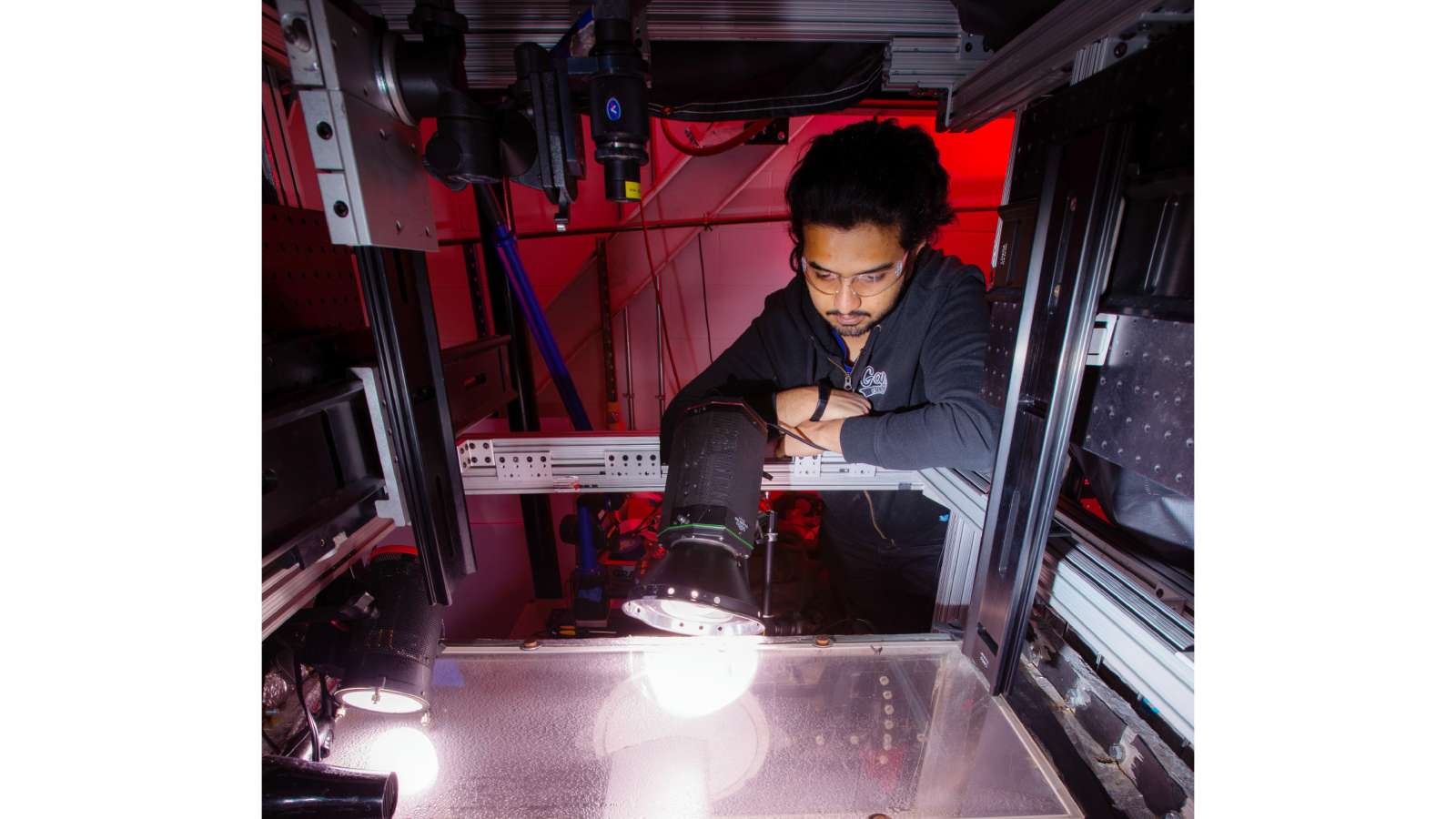We’ve all been there. Stuck on the tarmac while the ground crew battles Mother Nature to clear accumulated ice from the plane.
Research by Hui Hu and his students may lead to the development of more effective and robust de-icing strategies to ensure safer and more efficient operation of aircraft and aeroengines in cold weather.
Harsha Sista, a Ph.D. student on Hu’s team, surveys the Icing Research Tunnel inside Howe Hall, as freezing moisture moves through the tunnel, attaching to a wing section.
Their team also tested aerodynamic performance of fan rotors under glaze icing conditions. They discovered performance degraded substantially due to rougher surfaces of iced fan blades—needle-like icicles grew rapidly from the surfaces of the engine’s rotating spinner and fan blades. The spinner-fan model was found to consume more power under the icing condition, despite different types of ice structures amassed on the fan blades.
Hui Hu, the Department of Aerospace Engineering’s Martin C. Jischke Professor, and his team are garnering national attention for their work earning the best paper award from the American Institute of Aeronautics and Astronautics’ Gas Turbine Engines Technical Committee.
Their findings could lead to improvements that help us all get back in the air sooner, and safer.
